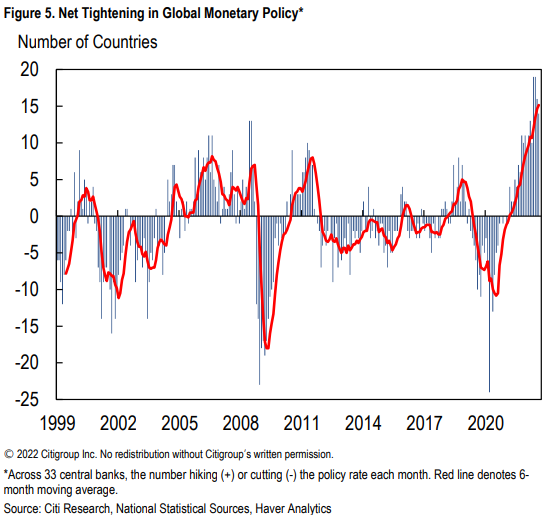Citi Global Economics with the note:
CITI’S TAKE
With global inflation running at the hottest pace in decades and global growth on a distinctly slowing trajectory, the risks of a stagflationary episode are clearly rising. This could take the form of a sustained period of high inflation and weak (or negative) growth, similar to the late 1970s and early 1980s.
But we also flag the possibility of “transitionary stagflation.” By this, we mean a temporary period (perhaps lasting a quarter or two) when the slowing of global growth runs ahead of the retreat in inflation; specifically, global growth could give way before inflation shows signs of meaningful slowing. The result would be intensified stress in financial markets and increased pressures on central banks, as they sort through the economy’s conflicting signals. Even so, we take encouragement from the fact that central banks are moving aggressively to fight inflation and longer-term inflation expectations continue to look fairly well anchored.


